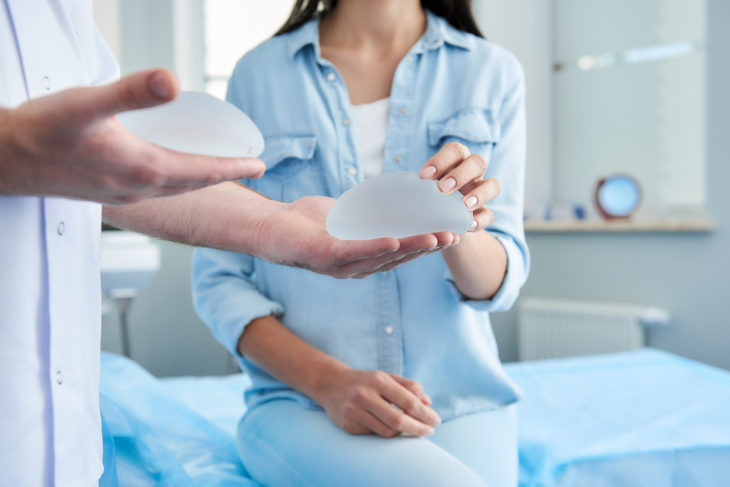New thing to be afraid of: exploding breast implants! The trauma is not unheard of, but the particular way in which one Beijing woman’s implants combusted just might be. After lying on her stomach for four hours playing a game called Dragon Summon on her phone, the woman experienced severe pain in her chest and went to the hospital. There she found out an implant had ruptured. This is very dangerous because the fluid can drain out into her body.
The implants were obviously of pretty questionable quality if they could not withstand the mere pressure of the woman’s body weight to which they were attached. Unfortunately, this is not the first time and it won’t be the last time that a person is injured from a leaking or ruptured implant. Here’s what we know:

Source: iStock
1. Cutting Corners: Cutting corners in the production of silicone implants has been an ongoing problem when it comes to breast augmentation surgeries. France recalled silicon breast implants from the company Poly Implant Prothese (PIP) after one thousand of the 300,000 women from 65 countries (mostly in Europe and South America) suffered ruptures. These implants also happened to be made with industrial-grade silicone instead of medical-grade silicone. They were such a liability that the French government offered to pay for French women to have their remaining implants removed before they too rupture. Brazil even went so far as to ban implants from PIP so none of their own citizens would be injured; Venezuela, Germany and the Czech Republic all advised people to get the implants removed.
2. Springing A Leak: It is well established that leaking silicone into your body is not awesome. According to the Mayo Clinic, repercussions include pain and swelling in the affected breast because silicone is an irritant. This happens because the silicone causes the fibrous tissue in the breast to become inflamed. There is also a chance that the rupture could cause hardening or softening of the breast, lumps, or change in shape or size of the breast. Fortunately, according to the Mayo Clinic, there appears to be no connection between broken implants and breast cancer.

Source: Medical Xpress
3. No Symptoms: When what is called a “silent rupture” happens, the fibrous tissue that has grown around the implant holds the silicone in and it therefore usually doesn’t present signs or symptoms. A silent rupture would be found by an imaging scan, like an MRI scan. In the case of a silent rupture, the silicone can stay in the breast as long as symptoms do not appear — meaning a person could be harmfully exposed much longer.
4. Surgical Removal: When breast implants rupture or leak, the silicone must be surgically removed. The patient then has the option to receive another, hopefully more durable, implant.Even if the patient opts out of another implant, she must get reconstructive surgeries if she wants her breasts to maintain an aesthetically pleasing appearance.

Source: Pinterest
5. They Don’t Last: The Food and Drug Administration recommends women get MRIs three years after their initial implants and then every two years after that. The FDA also wants everyone to know that implants do not last for life. In 2011, they announced that one in five women actually had her implants completely removed within 10 years of getting them. The longer someone has implants, the more likely they are to cause health complications.
Okay, it’s a little comical that someone’s boob job busted just because she was playing a video game for four hours. But really, exploding breast implants are no laughing matter.

Source: Canadian Living
Original by
